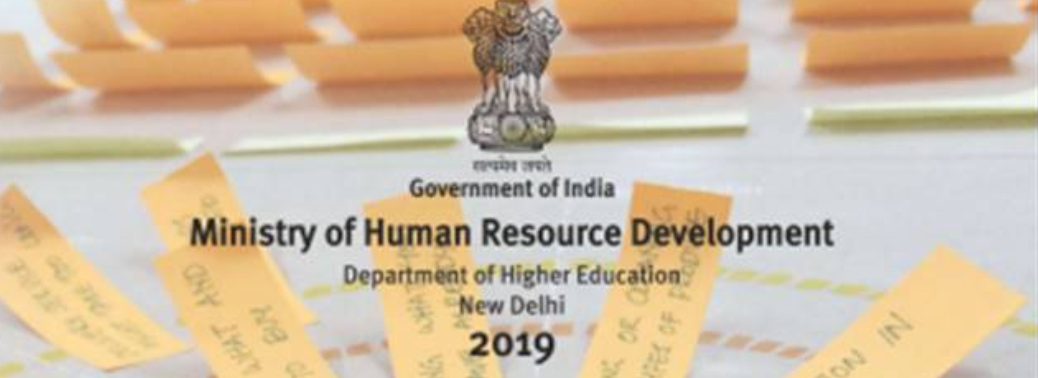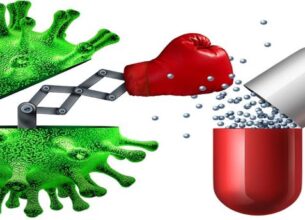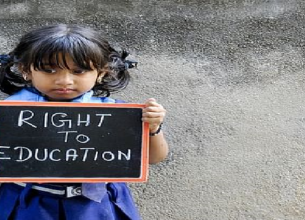ALL INDIA SURVEY ON HIGHER EDUCATION: 2018-19
24, Sep 2019

Context:
- The Human Resource Development Ministry has recently published the 2018-19 edition of the AISHE Report 2019, which has thrown up some startling findings and revelations about the higher education sector in the country.
About AISHE Report:
- AISHE is a Pan India, annual web-based survey which covers all the Higher Educational Institutions in the country conducted by Ministry of Human Resource Development in order to give an overview and understand about the latest developments in the field of higher education.
- Various parameters on which the data is collected are teachers, student enrolment, programs, examination results, education finance, infrastructure etc.
Key Findings of the Report:
1. Gross Enrolment Ratio (GER): GER is statistical measure for determining number of students enrolled in undergraduate, postgraduate and research-level studies within country and expressed as a percentage of population.
- Gross Enrolment Ratio (GER) in Higher education in India is 3% which is a marginal increase from 25.8% in 2017-18, which is calculated for 18-23 years of age group.
2. Gender parity among teachers: The total number of teachers are 14,16,299, out of which about 57.8% are male teachers and 42.2% are female teachers. At All-India level there are merely 73 female teachers per 100 male teachers.
3. Gender parity among students: It may be seen that ratio of male is higher than female in almost every level, except M.Phil., Post Graduate and Certificate.
Student enrolment at Under Graduate level has 51% male and 49% female. Diploma has a skewed distribution with 66.8% males and 33.2% females. Ph.D. level has 56.18% male and 43.82% female.
4. Narrowing Gender Gap: Total enrolment in higher education has been estimated to be 37.4 million and among them female constitute of 48.6% of the total enrolment. It was a slight improvement from earlier 47.6% in 2017-18.
5. Number of Higher Educational institutes: The number of universities has grown to 993 in 2018-2019 from 903 in 2017-18 and there is a 3.3% increase in the number of colleges in the country.
6. Preference to Higher studies: Of the total student enrolment in higher studies, about 79.8% of the students belongs to Undergraduate level programme, while only 0.5% of students of the total enrolment enrols for a Ph.D. programme.
7. Pupil Teacher Ratio (PTR): PTR in Universities and Colleges is 29 and PTR for Universities and its Constituent Units is 18.
Other key Facts:
1. Share of female students is lowest in Institutions of National Importance followed by State Private Open Universities, Deemed Universities-Government.
2. Uttar Pradesh comes at number one with the highest student enrolment followed by Maharashtra and Tamil Nadu.
3. In Uttar Pradesh and Karnataka, there are now more females in the age group of 18-23 enrolling for higher education than male students.
State of Higher Education in India
- India’s Higher Education sector is one of the largest in the world. However, it still lags behind other countries such as USA, China, Thailand etc.
- This has been aptly proved by the absence of India’s top Universities in the world ranking list annually.
Some of the Key Challenges Faced by the Sector are as:
- Dominance of private sector that has caused skewed regional and sectoral growth.
- Lack of focus on Skill Development: Education system has been plagued with outdated syllabus, rot learning, lack of employability and lack of focus on skill development.
- Overregulation: Higher Education System is regulated by many bodies that causes overlap of power and confusion. This has drastically reduced the autonomy of Universities.
- Lack of resources and required funds and largely linear model with very little focus on specialization.
- More emphasis only on few specialised branches such as social sciences and absence of due importance on diversified fields.
Government Interventions:
- Higher Education Financing Agency (HEFA) scheme has been sanctioned to improve the development of infrastructure in premier education institutions.
- Madhyamik and Uchchtar Shiksha Kosh: Non lapsable funds for secondary and higher education sectors respectively.
- New Delhi Declaration on Education: It reiterates India’s commitment to achieve SDG 4 and improve quality of education.








